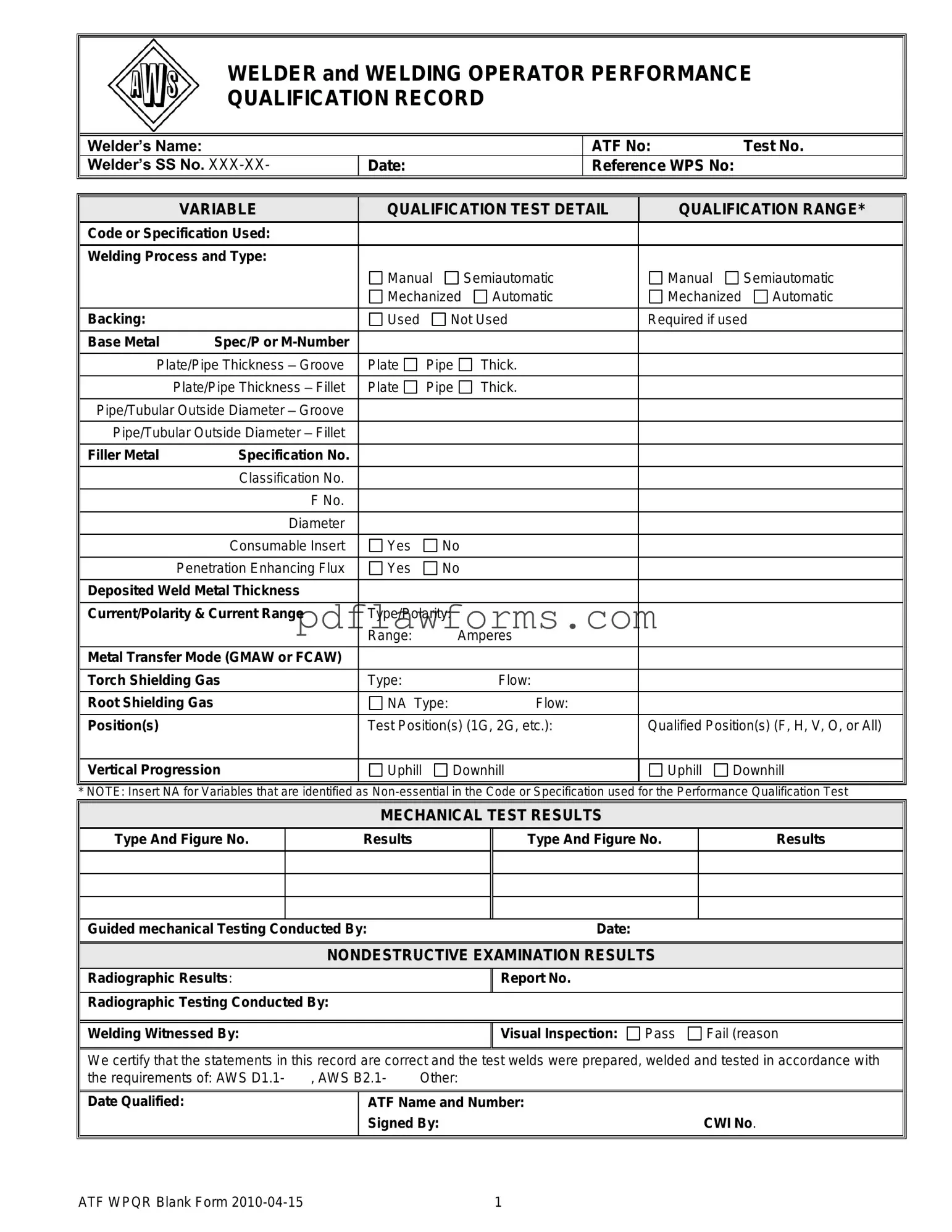The Welder Performance Qualification Record (WPQR) form serves as a crucial document in the welding industry, providing a comprehensive overview of a welder's qualifications and capabilities. It captures essential information about the welder, including their name, identification numbers, and the specific tests they have undertaken. The form outlines the details of the qualification tests, such as the welding process used—whether manual, semiautomatic, or automatic—and the applicable codes or specifications that govern the welding standards. Additionally, it records vital parameters like the type of base metal, thickness, and filler metal specifications, ensuring that all variables are accounted for. The WPQR also includes results from mechanical tests and non-destructive examinations, which validate the quality and integrity of the welds produced. By documenting the positions in which the welder is qualified to work, the form establishes a clear framework for assessing skills across different welding scenarios. Ultimately, the WPQR not only certifies a welder's competencies but also ensures compliance with industry standards, contributing to the overall safety and reliability of welded structures.
